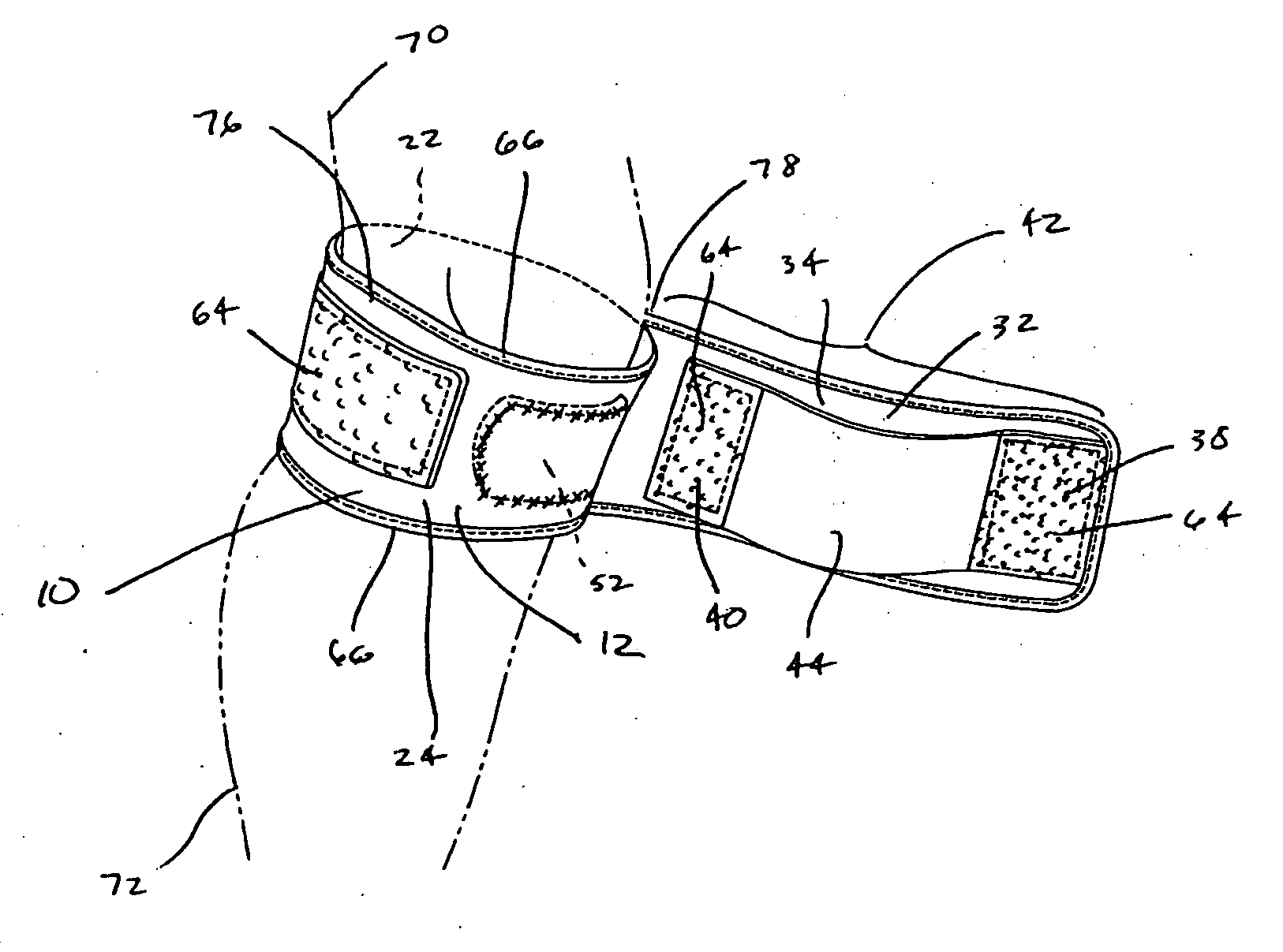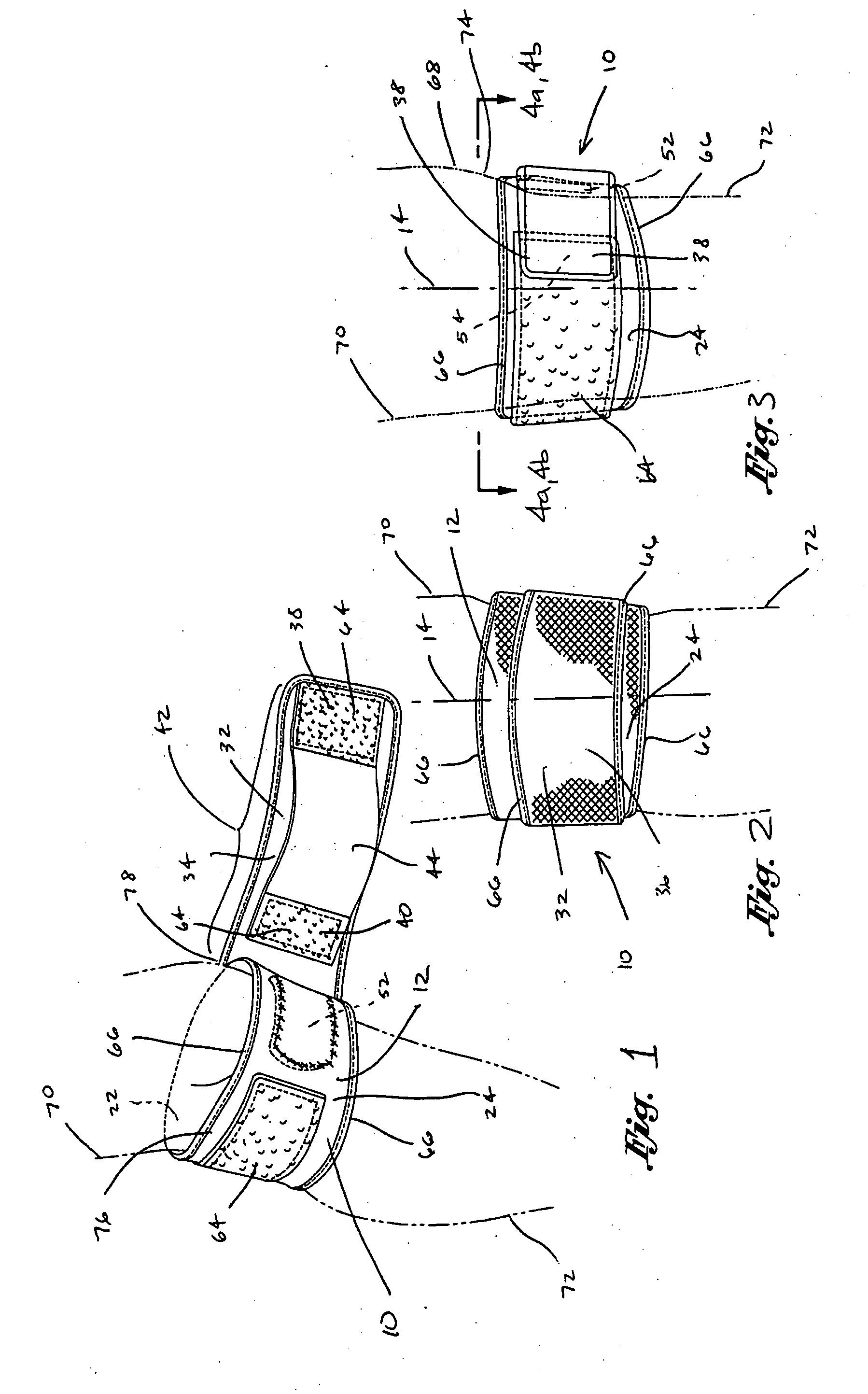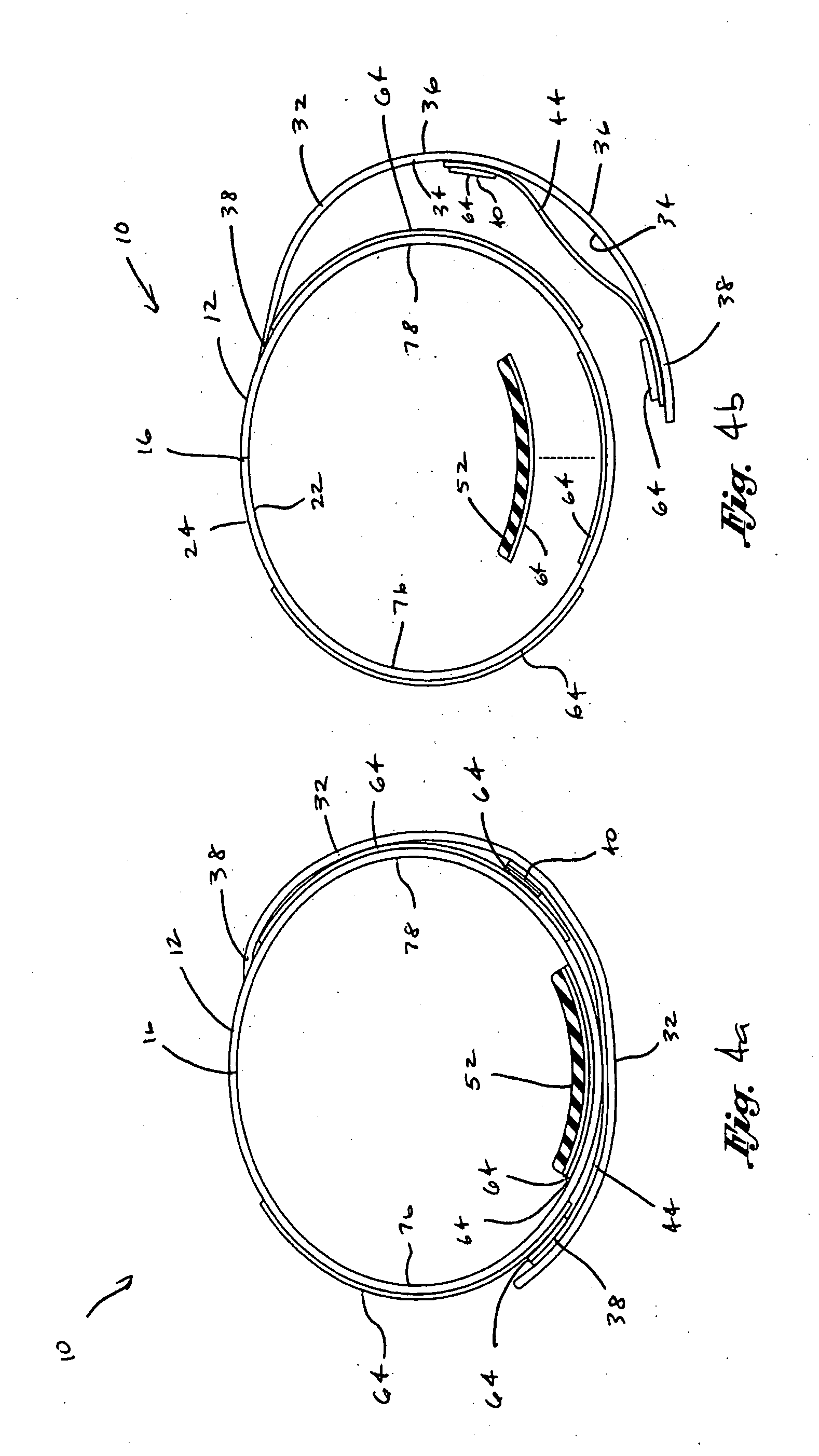Neuromusculoskeletal knee support device
a knee support and neuromuscular technology, applied in non-surgical orthopedic devices, bandages, medical science, etc., can solve the problems of pain and inflammation, complex load and stress on the knee, tightness and pulling of the tendons, etc., to prevent chafing of the patient's skin, and add stability to the knee brace
- Summary
- Abstract
- Description
- Claims
- Application Information
AI Technical Summary
Benefits of technology
Problems solved by technology
Method used
Image
Examples
third embodiment
[0045] Importantly, each of the anchor straps 32 of the knee braces 10 of each of the described embodiments, as well as the patella strap 46 of the third embodiment, is provided with a double anchor fastening mechanism 42. In this regard, the double anchor fastening mechanism 42 is comprised of a combination of end anchor portions 38 and an intermediate anchor portion 40 mounted therebetween, such that the anchor straps 32 and patella strap 46 may be secured to the outer sleeve surface 24. As will be described in greater detail below, the double anchor fastening mechanism 42 provides additional stability of the knee brace 10 against rotational slippage during medial tractioning of the anchor straps 32 and patella strap 46. In addition, the double anchor fastening mechanism 42 facilitates the neuromuscular stimulation features provided by the viscoelastic pad 52 when the anchor strap 32 and patella strap 46 are tractioned medially across the patient's knee 68.
[0046] In addition, a tr...
first embodiment
[0047] Referring now once again to the first embodiment shown in FIGS. 1-3, 4a, and 4b, the sleeve 12 is preferably formed as a generally flexible tubular structure constructed of elastomeric material such as closed cell foam. In this regard, the elastomeric material preferably has favorable four-way stretch capability, as well as favorable warmth, durability, and stability characteristics. In addition, the elastomeric material preferably has favorable strength and flexibility characteristics, such that the sleeve 12 may be easily pulled over the knee. However, the elastomeric material is also preferably configured such that the sleeve 12 tightly conforms to the shape and contours of the knee 68 in the area just below the patella 74 in static modes as well as in dynamic modes of knee flexion and extension.
[0048] The elastomeric material is preferably at least partially comprised of neoprene. In order to provide neuromuscular stimulation characteristics, the neoprene may include a pa...
second embodiment
[0058] Importantly, in the knee brace 10 of the second embodiment, the lower sleeve portion 20 includes a patella hole 26 in order to keep unwanted pressure off of the patella 74. The lower sleeve portion 20 may also include a popliteal hole 28 formed therethrough and being positioned generally diametrically opposite to the patella hole 26. The popliteal hole 28 is preferably configured to be aligned with a popliteal region of the knee 68 on a posterior side thereof. Preferably, the patella hole 26 is anatomically sized in a generally circular shape to accommodate the patient's patella 74, although other shapes may be utilized. The popliteal hole 28 may optionally be included in the sleeve 12 and may include a lawyer of popliteal webbing 30 of elastomeric material such as nylon webbing or material known under the trademark LYCRA. The popliteal hole 28 is configured to limit bunching of the sleeve 12 in the popliteal region of the knee 68 during knee flexion. As is shown in FIG. 7, t...
PUM
 Login to View More
Login to View More Abstract
Description
Claims
Application Information
 Login to View More
Login to View More - R&D
- Intellectual Property
- Life Sciences
- Materials
- Tech Scout
- Unparalleled Data Quality
- Higher Quality Content
- 60% Fewer Hallucinations
Browse by: Latest US Patents, China's latest patents, Technical Efficacy Thesaurus, Application Domain, Technology Topic, Popular Technical Reports.
© 2025 PatSnap. All rights reserved.Legal|Privacy policy|Modern Slavery Act Transparency Statement|Sitemap|About US| Contact US: help@patsnap.com



